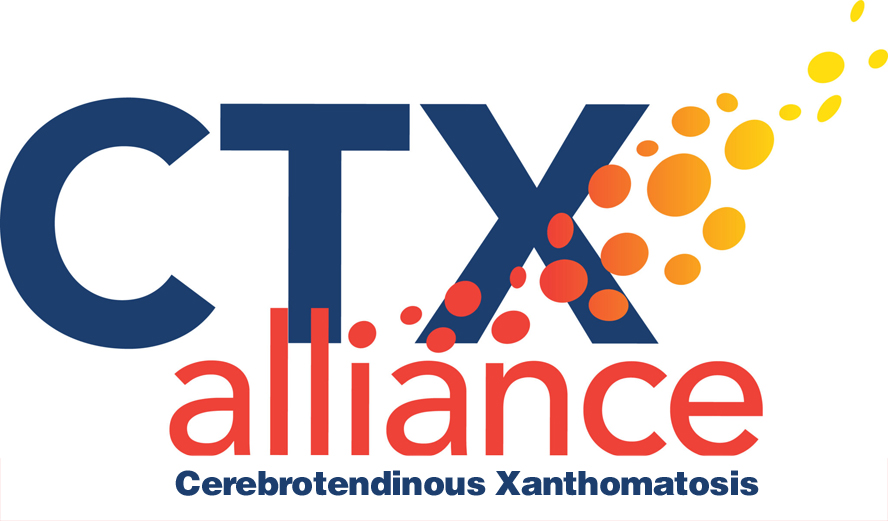Providing education, support, advocacy, and promoting research
for CTX patients, their families, and medical professionals
who treat and study this rare disease.
Treatment for CTX

Although early diagnosis and treatment initiation can improve symptoms and prognosis, more standardized approaches to diagnosis, treatment and management of patients have only been recently described.
The generally accepted first line treatment for CTX is chenodeoxycholic acid (CDCA). Prompt CDCA treatment of CTX affected individuals with clinical symptoms has been demonstrated to prevent disease progression. This treatment is a lifelong replacement therapy which, if started early in the course of disease, can considerably improve prognosis. It may be capable of partially reversing the disease process in CTX. Treatment progress is monitored by using biochemical testing to confirm decreases in blood cholestanol, bile alcohols, bile acid precursors and urinary bile alcohols.
Ctexli™ is the newly FDA-approved CDCA treatment for CTX in adults in the U.S. Before receiving FDA approval, CDCA—previously known as Chenodal®—was made available to CTX patients through medical necessity, a designation used when a drug is deemed essential for treating a serious condition with no other acceptable alternative.
CDCA is a prescription medication that is available also in Europe, Israel, and Chile and potentially other countries. Cholic acid, another bile acid, is sometimes used to treat CTX as well but data are limited.
Additional symptomatic or supportive treatments (such as cataract surgery, medical management of spasticity or neuropathy, treatment of psychiatric symptoms and counselling) may be used to treat the symptoms of CTX when deemed necessary by your medical care team.
Early identification and treatment are key to prevent the clinical progression of disease and improve clinical outcomes in CTX. If CTX is diagnosed before the neurological disease has progressed, treatment with CDCA can prevent the severe cognitive impairment and decline that may occur with the progression of untreated CTX.
After diagnosis of a family member with CTX, additional family members that do not yet have clinical symptoms may be identified as being affected. Treatment with CDCA may be initiated to prevent disease progression.
Experts are working to generate guidelines for diagnosis, treatment and management of CTX in infants that may be identified through future newborn screening for CTX. The CTX Alliance is supporting efforts toward implementing newborn screening for CTX to identify this treatable condition at birth and prevent the progression of disease.

Join The CTX Alliance
Join our mailing list to receive information and news as we begin to gather and expand the CTX community.
Support the CTX Alliance
1586 Sumneytown Pike
PO Box 1322
Kulpsville, PA 19443
info@ctxalliance.org
Latest CTX Articles
- Allelic prevalence and geographic distribution of cerebrotendinous xanthomatosis March 17, 2025
- Chenodeoxycholic acid (CDCA) treatment during pregnancy in women with cerebrotendinous xanthomatosis (CTX): Lessons learned from 19 pregnancies March 17, 2025
- Cerebrotendinous Xanthomatosis occurs at high frequency in Ashkenazi Jews March 17, 2025
